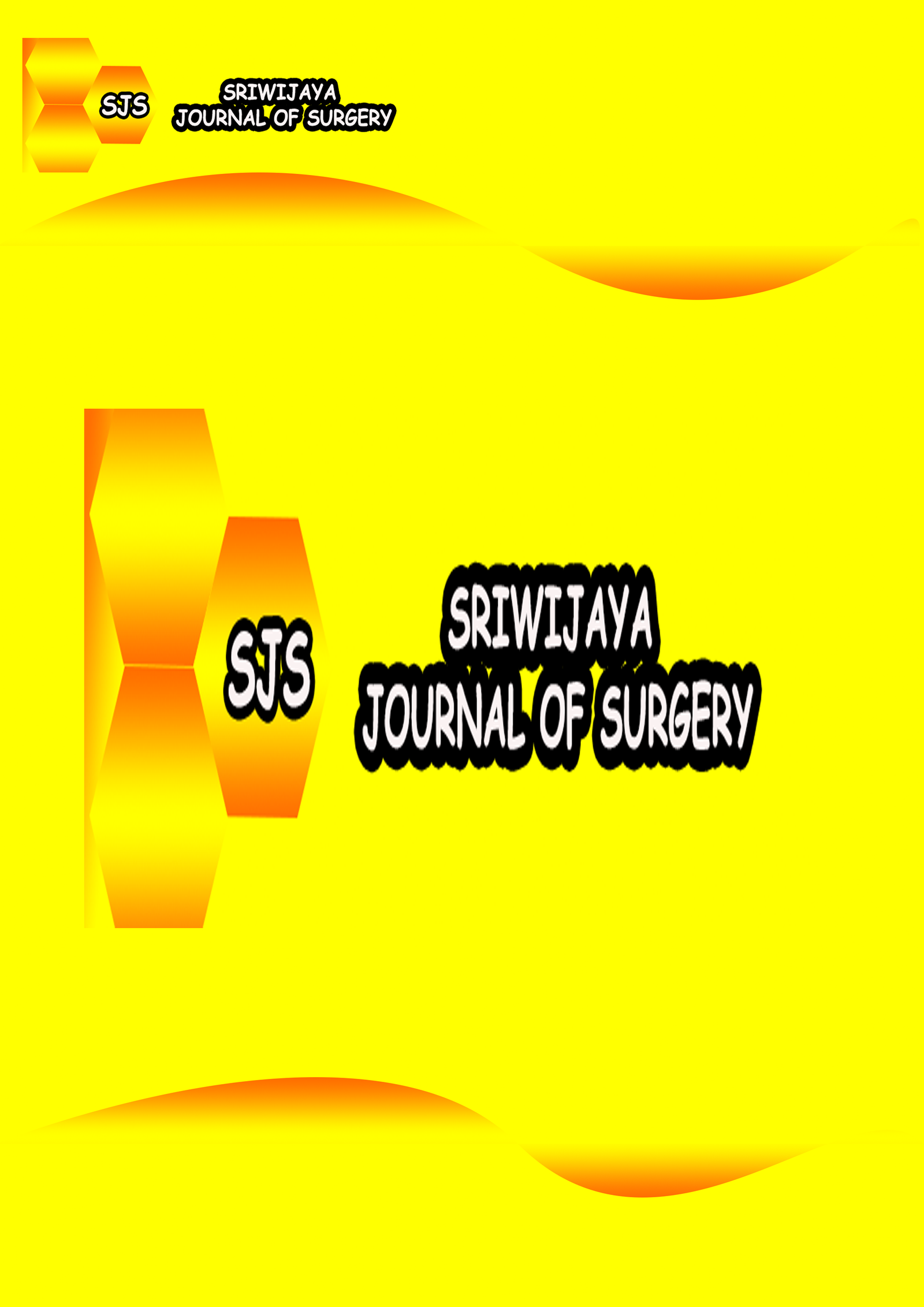Main Article Content
Abstract
ABSTRACT
Introduction. Secondary infection is one of the most serious complications and the leading cause of death in burn patients. Silver sulfadiazine (SSD) is the standard topical antimicrobial for burns for the past several decades. At present, nano sized silver particles in sulfadiazine nano silver packages have a high surface to volume ratio and remain effective in low concentrations and minimize silver toxicity to tissues.
Methods. This study was a prospective parallel open-label randomized controlled clinical trial. This research was conducted in the Plastic Surgery Subdivision of the Muhammad Hoesin General Hospital Palembang Section from May to September 2018. Deep-dermal burn patients were given random therapy of sulfadiazine and silver sulfadiazine nanosilver. Examination of the number of pre-treatment and post-treatment burn colonies was carried out at the Microbiology Laboratory of Muhammad Hoesin Hospital Palembang.
Results. Profile of patients with deep-dermal burns at RSMH are male (76.7%), age group between 15-54 years (66.7%), employees (30%), burn area <20% (66.7 %), and caused by fire (56.7%). There were differences in the mean number of pre and post-treatment colonies in the sulfadiazine nanosilver group, but there were no differences in the mean number of pre-and post-treatment colonies in the silver sulfadiazine group. The mean number of post-treatment colonies in the sulfadiazine nanosilver group was lower than the silver sulfadiazine group, but there were no significant differences in the number of germ colonies in the two groups.
Conclusion. Sulfadiazine nanosilver is effective in reducing the number of germ colonies in patients with deep-dermal burns compared to silver sulfadiazine.
Keywords
Article Details
1. Authors retain copyright and grant the journal right of first publication with the work simultaneously licensed under a Creative Commons Attribution License that allows others to share the work with an acknowledgement of the work's authorship and initial publication in this journal.
2.Authors are able to enter into separate, additional contractual arrangements for the non-exclusive distribution of the journal's published version of the work (e.g., post it to an institutional repository or publish it in a book), with an acknowledgement of its initial publication in this journal.
3.Authors are permitted and encouraged to post their work online (e.g., in institutional repositories or on their website) prior to and during the submission process, as it can lead to productive exchanges, as well as earlier and greater citation of published work.

